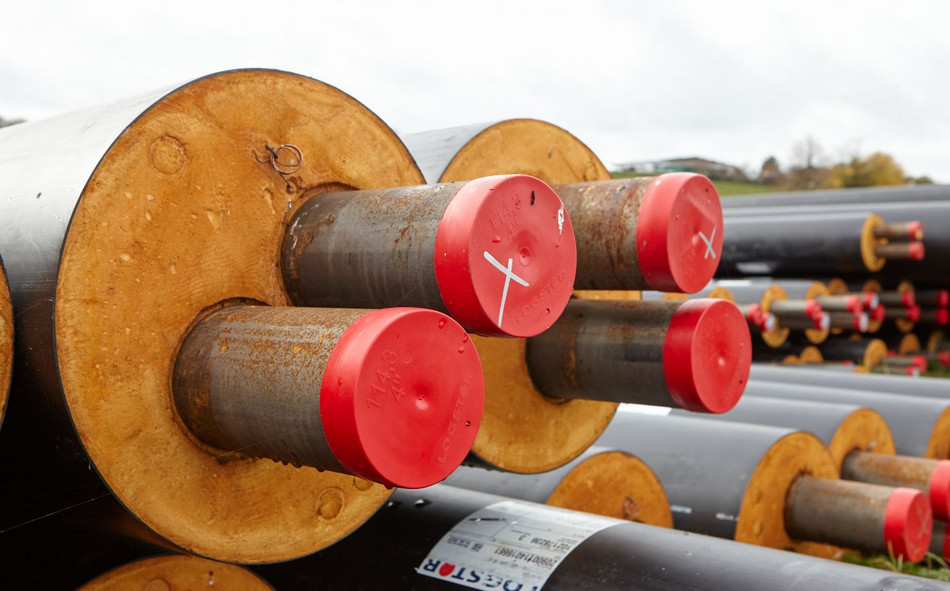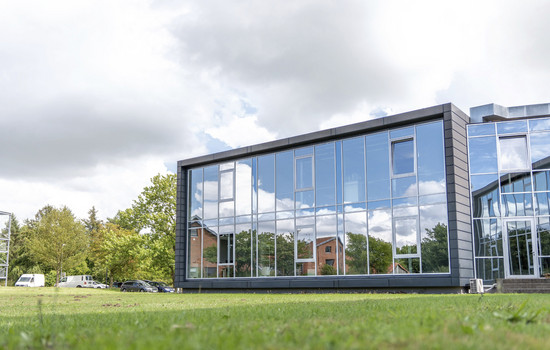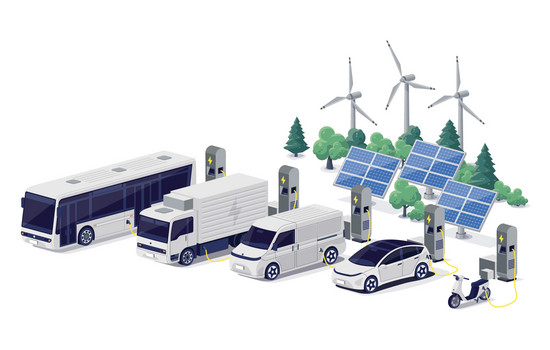“This is a question of survival – not of profit.”

THE GP JOULE-MAGAZINE NR. 13 / NOVEMBER 2022
According to the plans of the Federal Ministry for Economic Affairs, municipal heat planning is to become a mandatory duty for municipalities from 2023. And from 2026, they must have communal heat planning in place. Dr Jens Clausen, member of the “Municipal Climate Protection” Scientists for Future expert group, explains in our interview the tasks facing municipalities and why this is the right thing to do.
Dr Clausen, what can heating do for the energy transition? Why is it the focus of the current draft law?
Dr Jens Clausen: We are faced with the need to decarbonise the whole of society. And as we all know, heat supply in particular is still significantly more fossil-fuelled than electricity and in a similarly poor condition as transport. It is almost exclusively fuelled by fossil energy. About 50 per cent of households have gas heating, 25 per cent have oil heating, and 12 to 14 per cent have district heating, which, however, mainly comes from fossil power plants. So it’s very bad. We want to – and must – change this in the next 20 years.
And why does this need to be planned at the municipal level? The market has been regulating this up to now.
We must not leave this transformation to the whims of the market and the decisions of individuals. Especially when you consider that heating networks are already in place. We must now use our imagination to try to fill these networks with heat from renewable sources of varying quality, for example from waste and sewage sludge incineration plants, but also with river water heat pumps, deep geothermal energy, solar thermal plants and so on. Th is gives rise to the potential of regenerative heating networks. Old-style fossil heat was distributed via an almost nationwide gas network and in the case of oil transporters, via a completely nationwide road network. The fact is, we simply needed less heating through networks.
Why is the task of heat planning pushed onto municipalities?
If I only connect one in five houses to a heating network, the pipes are longer than they need to be and therefore inefficient. You have to define areas where local heating networks are laid. Th ere must be an obligation to connect and use these networks for them to be efficient. So you need a municipal district heating bylaw. And that in turn needs to be done on a planned basis.
So what do the municipalities have to do now?
They need to think: where does a heating network make sense? In which areas will it be compulsory? And conversely: where can heat pumps be placed? Geologists and groundwater experts say we must not turn the earth everywhere into Swiss cheese. There are areas that are suitable for this and there are areas where we should not do it out of prudence. These should be reflected in the municipal heat planning so that people there do not get their hopes up in vain. Then there are sources of waste heat in the economy. These are not confined to chemical, steel and cement plants, but also to modern facilities such as data centres. It would make good sense to integrate a kind of waste heat register into the heat plan to make all parties aware of where there is waste heat. And then electricity grids have to be expanded so that they don’t collapse under the quantity of wall boxes and heat pumps.
The Heat Planning Act focuses on municipalities with 10,000-20,000 inhabitants. Smaller municipalities are much more agile: people know each other, the approach is more direct and there is undoubtedly a more public-spirited approach. Have these smaller municipalities been deliberately left out or will they also come under the spotlight one day?
There is simply a very high level of heat extraction per metre of street compared with small communities in densely built-up cities with multi-storey houses. This does not mean that smaller municipalities are prevented from making such a plan. They can also become active. In fact they should do so, especially if there are heat opportunities – i.e. heat sources. I even expect that there will be funding pots for these sort of municipalities as well.
The problem primarily lies with the existing buildings.
Correct. And that’s where the protection of historical monuments oft en gets in the way. It must also be made possible for listed buildings to undertake central energy refurbishment. Nevertheless, inner cities oft en have a relatively high energy density. Th is means that heating with heat pump systems alone is only feasible to a limited extent in inner cities. That is the advantage of heating networks: I can heat buildings that I would otherwise have great difficulty making climate neutral.
Much to do and so much time pressure. Do you think this undertaking is feasible? We know how slowly the wheels turn.
It’s no real surprise that Climate Protection Minister Robert Habeck has been talking intensively about speeding up approval processes since the beginning of the year. Because either we adapt to nature faster or we perish. This is why Habeck refers to the overriding public interest in renewable energies. He is talking about diff erentiating from other state goals such as the protection of historical monuments we’ve already mentioned, which of course has a high, but not critical level of importance.
This sounds like a lot of work for the municipalities, and they will soon not be able to get around this because of the legal situation. Apart from this compulsion, are there also advantages that speak in favour of municipal heat planning and the operation of their own heating networks?
We have already mentioned a few. But in the final analysis, municipalities and home-owners each have what I would almost call a planetary duty. Since the 1972 report of the Club of Rome, if not before, it has been clear that our way of life is not sustainable and cannot be continued in this way in the long term. Other countries such as Denmark and Sweden rolled up their sleeves around 1990 and implemented their heating transition. We had a short phase in Germany under the Red-Green coalition from 1998 to 2005 during which at least the electricity turnaround was addressed. Then came 16 years of deep sleep under the CDU and Mrs Merkel. The Merkel government has bequeathed a gigantic task not only to the future generation, but also to the current one. If we want to survive in the long run, we have to do it now – and we have virtually zero time available. The municipalities have a duty. This is a question of survival – not of profit.
Scientists for Future
In the face of the global climate, biodiversity and sustainability crisis, scientists around the world are raising their voices. The Scientists for Future are a non-partisan and non-institutional association of scientists from all disciplines. Their commitment promotes objective, public and political discourse. To this end, they evaluate current developments on the basis of scientific findings, make interrelationships clear, identify possible conflicts of objectives and resolutely counter false claims. The Scientists for Future have their origin in “Fridays for Future”. In the meantime, many other alliances, inspired by this initiative launched by school pupils, have been formed along similar lines, such as “Grandmas for Future” or “Entrepreneurs for Future”, whose 5,000 and more supporters include GP JOULE.
Dr Jens Clausen
is co-founder of the Borderstep Institute. The graduate engineer in mechanical engineering heads the Borderstep office in Hanover as a senior researcher. His work focuses on start-up, innovation and transformation research. The Institute analyses solutions to problems and develops action strategies for a sustainable economy. Clausen’s particular scientific interest is in the topics of heat, electromobility and digitalisation.
![[Bitte in "English" übersetzen:] [Bitte in "English" übersetzen:]](/fileadmin/_processed_/8/9/csm_gp_jamesblog_14_7a870ae12b.jpg)




![[Bitte in "English" übersetzen:] [Bitte in "English" übersetzen:]](/fileadmin/_processed_/a/6/csm_GP_29.01.24_ZweiVonUns-Olaf_header_2d7a81f45d.jpg)